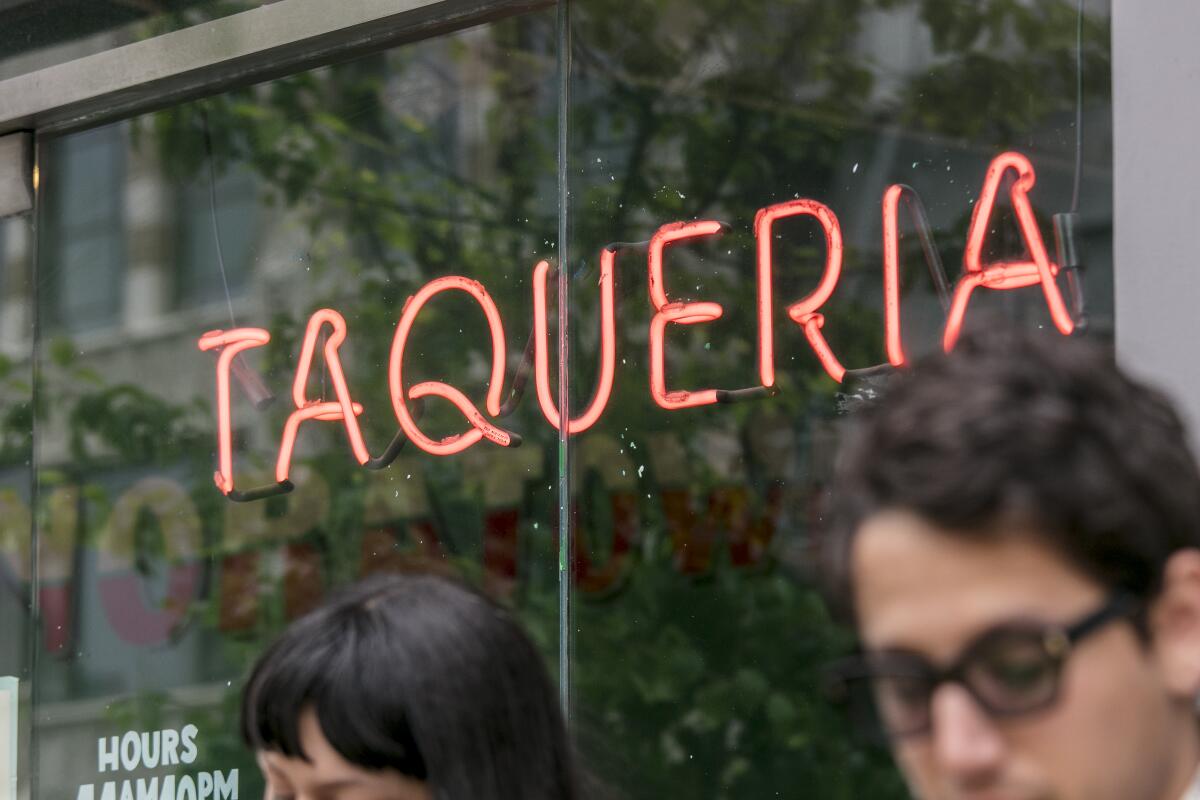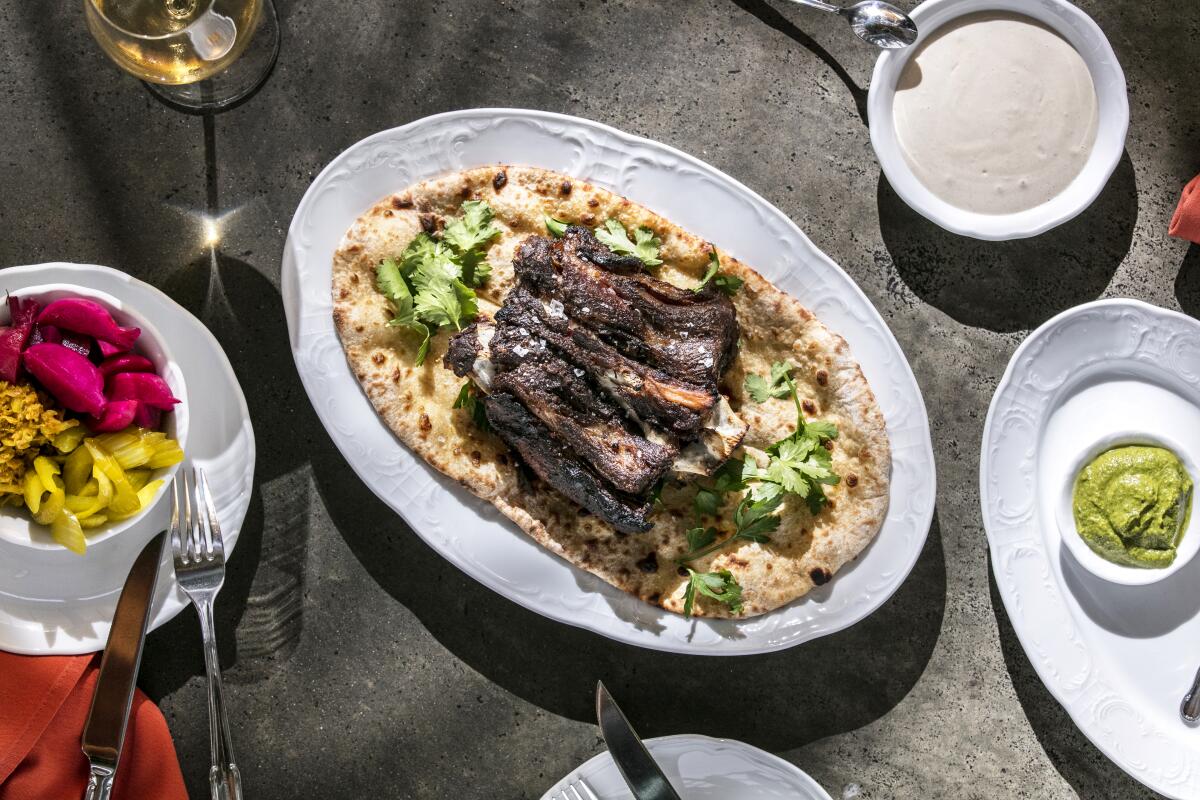Newsletter: Here’s why we stopped italicizing ‘foreign’ foods

- Share via
Happy New Year, everyone. Whether you spent the winter holidays making tamales, slow-roasting pernil or learning the fine art of opening Champagne with a sword, I hope you ate well, surrounded by the people you love.
My resolution this year is to cook more ambitious, dinner party-level dishes. I was inspired by a recent Food team party hosted by cooking editor Genevieve Ko, who modestly invited us for a casual, snacky get-together, then delivered a feast of Spanish charcuterie, pork roast and the crowning glory of the evening: a terrific paella. I’m still thinking about that meal.
This week I want to share two exciting changes at L.A. Times Food.
For starters, the print Food section is moving to Sundays! Look for our section in your Sunday paper starting tomorrow, Jan. 5. (If you don’t subscribe, you can get the Sunday paper with an unlimited digital subscription here.)
If you’re a regular reader of the section, perhaps you noticed another recent change: Last month, we stopped the practice of italicizing non-English words in our food stories.
Setting non-English words in italics is standard practice at many publications. The L.A. Times style guide provides the following recommendation: “Use italics for foreign words or phrases that do not appear in the designated Webster’s or that appear there in italics.”
Italics are intended to facilitate clarity by signaling to readers that they haven’t stumbled onto a typo.
But many writers, me included, believe that the words we choose to italicize — and thereby highlight as “foreign” — can have an “othering” effect.
Here’s a brief sampling of words that we have italicized in recent months: shawarma; al pastor; pollo asado; birria; carnitas; taquitos de papa; chicharrón; salsa verde; taquero; and salsa roja.
Seeing the foods many of us grew up eating italicized can feel jarring and alienating.

Who are we writing for when we decide to italicize “salsa roja?” Salsa sales overtook ketchup sales in this country decades ago. Birria, xiao long bao, sai krok Isaan, crepes, American cheese — they’re all foods we enjoy and ought to consider without qualifiers. The sense of exoticizing foods through typography felt less like we were helping readers but rather signaling that one of these things was not like the other.
More than half of Angelenos speak a language other than English. Our work ought to reflect the diversity of the communities we serve.
The decision to drop italics may seem like a small one, but language has the subtle power to both empower and disenfranchise. I hope we always strive for the former.
What do you think? Email me at [email protected] with your thoughts.
Ask the critics
What is the correct spelling of pozole? (Or is it “posole?”)
— Dave, Twitter
I’ve seen every variant of spelling of the hearty chile-blistered stew of hominy and pork over the years. The modern word comes from the Nahuatl pozolli, which roughly translates as “boiled” or “frothy.” The letters “s” and “z” sound the same in Mexican Spanish, which probably explains why the word lends itself easily to different spellings. “Pozole” seems more common in Mexican recipe books, and “posole” shows up more frequently in the borderlands. I tend to favor the “older” spelling with a “z,” but both are widely accepted across Mexico and the United States.

Top stories
- How did Los Angeles become one of the most exciting food cities in the country? My fellow critic Bill Addison charts the exciting, paradigm-shifting decade in L.A. dining.
- Cronuts, cold brew, avocado toast: Columnist Lucas Kwan Peterson looks back on the 15 dining trends that defined the decade.
- Here are all 36 Food section covers published in 2019.
- Genevieve Ko and Ben Mims’ 10 favorite cookbook recipes of 2019 are the cooking inspiration you need in 2020.
- Finally, contributor Esther Tseng’s oyster explainer will take your appreciation of mollusks to the next level.
More to Read
Eat your way across L.A.
Get our weekly Tasting Notes newsletter for reviews, news and more.
You may occasionally receive promotional content from the Los Angeles Times.










